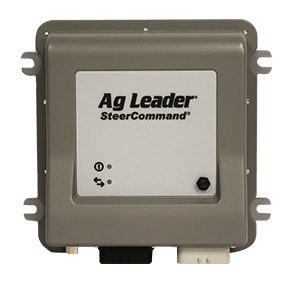Do-It-Yourself Field Tiling

Excess water is a common yield robber with corn and other crops. For farmers with heavy, moisture-retaining soils, or slow draining areas in a field, installing drainage tile can improve overall productivity. Additional drainage tile benefits include: faster soil warm-up in the spring, less compaction, better soil aeration and overall management implications like reduced yield variation, more days of machinery operation, earlier planting timeframes, lower nitrogen loss, less erosion, lower drying costs and overall lower per-bushel break-evens.
According to the latest USDA Census of Agriculture, drainage tile systems are utilized on almost 49 million acres of U.S. cropland, a testament to the importance of good drainage in sustaining some of the most productive farmland in the country. Adding new drainage tile lines requires close attention to the landscape, an effort that’s today aided greatly by Ag Leader’s InCommand 1200 display featuring the Intellislope Tile Plow Control System. Intellislope simplifies the process of installing field drainage tile by using a RTK GPS receiver to install tile with a positive grade through the entire run, eliminating the need for surveying equipment. And with the right equipment, installing tile can be cost-efficient with a high ROI.
Building the Case for DIY
Linden Wessels and his son Weston can attest to that. The Watseka, Illinois, father-son team raise row crops, and recently added a Soil-Max Gold Digger tile plow with Intellislope for their InCommand 1200 display in late 2017 to better care for their land and increase profitability of their operation.

“The issue around here in the last two or three years has been the big tiling companies don’t want to do the smaller jobs,” Weston said. “They’re always busy, so it’s hard to find time to get those smaller jobs done.”
In the last few years, tile installers have indeed been some of the busiest business partners for farmers around the nation, making it tough to get tile lines installed in the desired or necessary timeframe. The opportunity for farmers to do the same work on their farms can be a cost-efficient long-term solution when drainage tile is necessary, even when it’s tough to justify another upfront cost.
“It’s hard to get somebody to want to add tile when corn is $3.50 per bushel and landowners don’t want to budge on cash rents,” Linden added. “The cost of this machine, in the long run, is probably a lot lower than using a contractor. You can pay for this Soil-Max machine in three or four years if you’re pattern-tiling over 40 or 50 acres a year.”
Weston says it was an easy transition once they began using Ag Leader equipment for the process.
“The first morning alone, we easily put in close to 10,000 feet of tile. I was really impressed. It was really running through the tile. Doing a project in less than a week is no problem at all with this combination of equipment. The cost is a lot lower than what most contractors will charge you to do it. And, it’s an easy job for two or three guys to get done with the right equipment,” Weston said, adding it’s possible for him and his father to install 65,000 feet – or 80 acres – of drainage tile in a week. “Today’s precision software, honestly, is easy to get the hang of. The GPS seems to work pretty efficiently. Jobs that used to take days will now just take hours.”
Planning Your System
To create an effective drainage system, an assessment needs to be done to reveal both field-wide drainage needs, necessary system capacity and how tile lines – both mains and laterals – should be laid out. This is typically done along the natural contours of a field. It also includes the sizing for the lines, as well as the size, location and capacity of drains. The SMS Software Water Management Module allows you to map out and plan tile lines to be installed. Designing these plans in SMS allows you to visualize the field from different perspectives, as well as overlay with other layers such as yield or soil type maps.
Things to Consider
All the planning in the world isn’t any good if you don’t put it into practice with careful drainage tile installation. The right equipment and know-how can help ensure the end result is a system that effectively drains otherwise waterlogged soils.
“We had a mini excavator and a larger-framed tractor and other equipment we knew we’d need. We didn’t have to go out and buy all the rest,” Weston said. “It was just the InCommand 1200, Intellislope, Soil-Max and GPS 6500.”
How Other Tools Fit In
Just like GPS can help create a more comprehensive picture of field topography in the planning phase, precision agriculture tools can help with analysis that can help ensure drainage tile systems are having an ongoing benefit to both field conditions and crop yields. The ability to track specific variables that influence yield can help manage both the initial cost of a system and any changes important to sustaining stronger crop yields.
“It takes time to take the learning curve down to figure it all out, but once you do, it’s pretty simple,” Weston said. “It’s kind of scary to start using something you haven’t tried before. But, with this technology, it’s easy to for just the two of us to do the job, definitely.”
View more pictures of the tile intallation here!
















